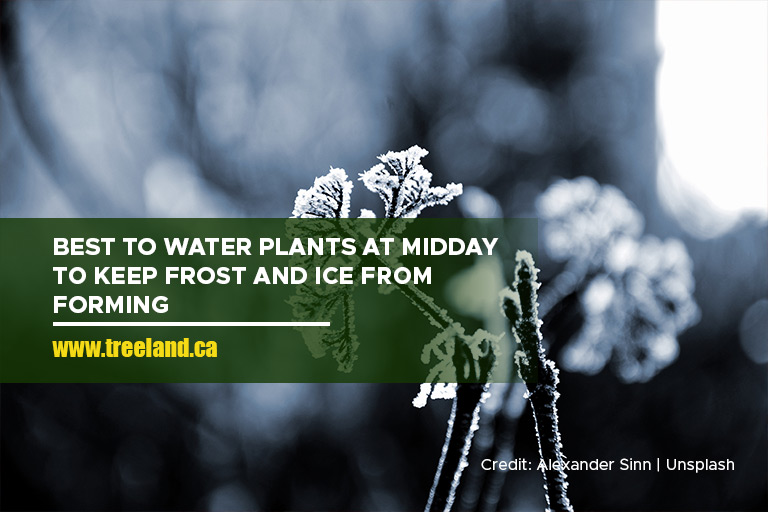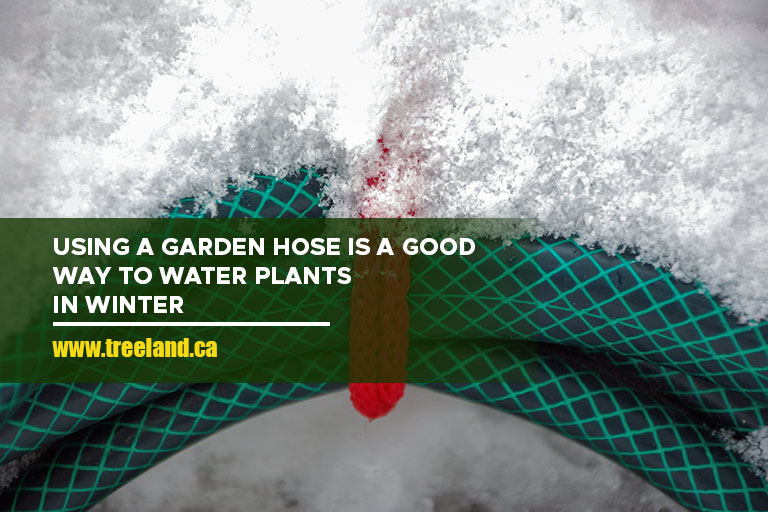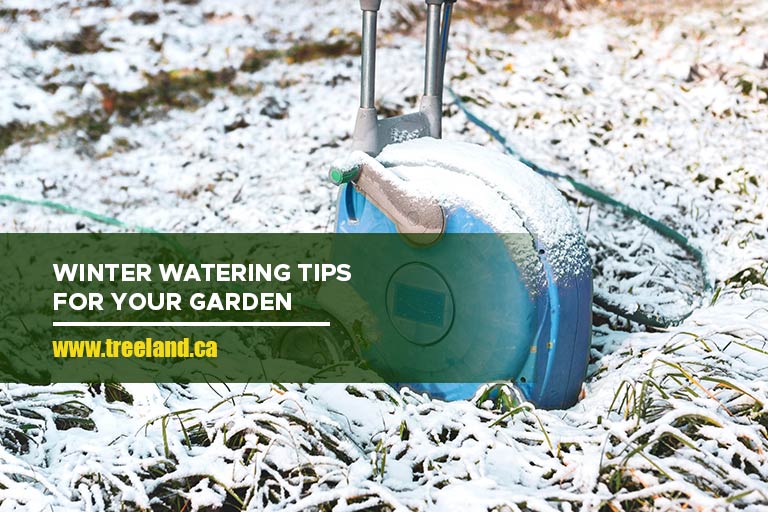While winter is a wonderful season, it can be a challenging time for your trees. When the winter weather arrives, many people assume it’s the worst time to water plants and neglects plant maintenance entirely. Despite being dormant in the winter, trees are still susceptible to the effects of extreme cold and dry climates. Though they may not appear like it, trees are under stress from the hard weather and the lack of water.
Even if temperatures drop and precipitation is a bit uncooperative, your plants may benefit from good watering. Here is some information you need to remember when watering plants in winter.
Do Garden Plants Need Watering in Winter?
Your plants may be in a dormant state, but they are not completely lifeless. They still need water to support some essential processes.
During a harsh winter spell, the inherent insulating qualities of the soil safeguarding the tree root systems are lost. These roots are the tree’s lifeblood, transporting essential nutrients and water from the earth to the tree. Unfortunately, because dry soil freezes faster, the ones near the surface withers.
Water functions as a heat trap, keeping the soil around your plant substantially warmer than the surrounding air and shielding your plants from winter harm.
Winter Watering Tips

Watering in the winter requires ample planning and timing, take into consideration these simple tips:
- Create a Watering Schedule
Maintain a consistent plan of tree watering throughout the fall and until the ground freezes, generally in late October or early November. To determine how often you need to water plants in winter, continue to keep an eye on the weather after the ground freezes over the winter months.
You must water your plants if there hasn’t been any precipitation rain during winter. Watering once per month is advised in dry conditions. If the dry weather persists, you may have to water twice monthly. Make a schedule on your calendar for when to water.
- Water When Above Freezing Temperature
Water your trees only when it’s warmer than 40° Fahrenheit or 4° Celsius and there isn’t any snow on the ground. As a rule of thumb, the soil should be dry to the touch. To prevent ice damage, the best time to water plants in winter is during the day or around noontime when the soil is at its warmest and most capable of absorbing water. Any standing water around a tree’s base can freeze and harm the bark.
- Water Your Lawn
Freshly sown and sodded lawn grasses are particularly vulnerable to cold damage. Prioritize established turf, especially those in locations exposed to the wind and sun. Watering protects them from drying out due to specific weather circumstances. Do not cut your grass shorter than 4 inches before winter to safeguard plant roots.
- Water Away From the Trunk
When watering a tree you should target the area where surface roots have already grown and away from the trunk. For established trees, water the area from between the plant and the outermost length of branches until a foot beyond the “drip line.” For young or recently planted trees, you can utilize the borders of the root balls as a guide. This stops water from collecting close to the plant’s trunk.
- Watering Evergreens
As a general rule, evergreen trees require more water than deciduous trees. Plants with a shallow root system, such as euonymus, non-native juniper, pine, and spruce, will be more prone to damage during winter.
Evergreen trees may lose water through their needles quicker than their roots can take it in due to cold, dry air. To compensate, it is important to have extra water in reserve heading into the winter season.
- Watering Bulbs
Don’t forget to water newly planted bulbs. A bulb naturally holds a significant amount of water, which helps it produce spring blossoms. They won’t be able to grow in the spring if they aren’t watered during the winter.
- Water Purposefully
Winter watering’s main goal is to keep the roots from drying up in the ground’s cold, dry climate, not necessarily to hydrate the plant’s stem. When there is no visible sign of a plant withering, it might be difficult to remember to water. It is important to note a reminder on your calendar.
What to Check before Watering
Before the temperature dips below freezing point, see to it that your irrigation system is properly winterized if you need it to water your trees. This will help keep your tree and sprinkler system safe from damage.
You can still water your trees in the winter if you don’t have an irrigation system. To thoroughly water your trees, use a garden hose equipped with a spray nozzle.
Hydrate the whole root zone of trees, not just the top layer of soil. This way, your tree receives the water it needs to survive the winter.
How to Best Water Plants in Winter

The frigid winter temperatures might make it more difficult to water. You may fill a bucket or watering can and use it to irrigate tiny gardens or plants in large pots.
A garden hose is a suitable alternative if your irrigation system has been turned off. Place the hose near the dripline of a tree and allow water to gently seep into the ground. Keep in mind that you should only do this when the weather is warm enough to keep your hose from freezing. Additionally, remember to empty your hose after to prevent the ice from forming.
How to Tell if Your Plants Need Water
The best way to determine whether your soil is too dry is to check the moisture content with your finger or a moisture meter.
Make a tiny hole in the ground about 2 inches deep and put a finger down. If the soil feels damp and clings to your finger, you may postpone watering your tree. Otherwise, deep watering could be necessary. You may also contact a certified arborist if you need assistance with winter tree care.

